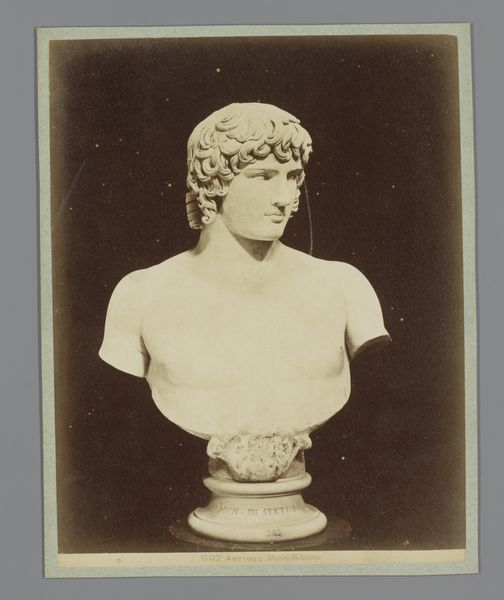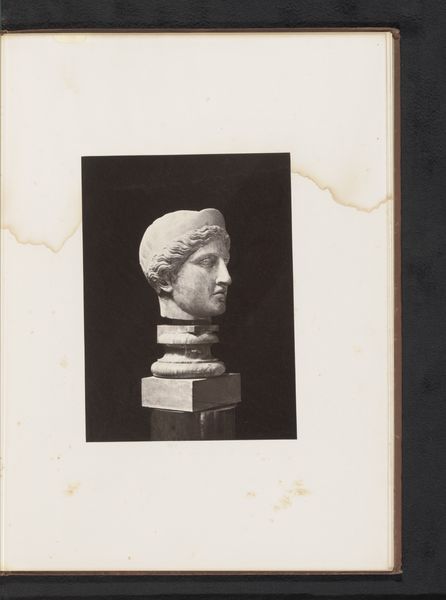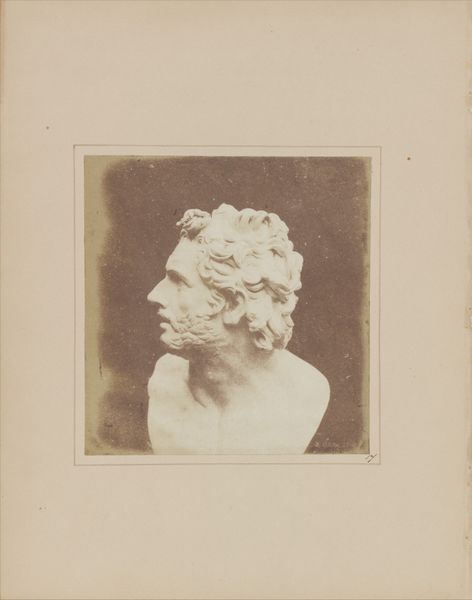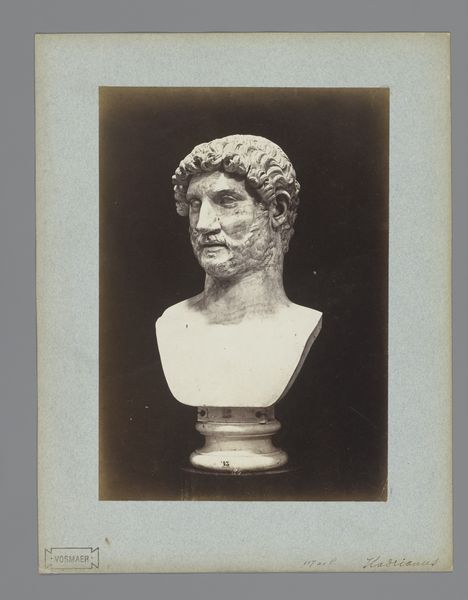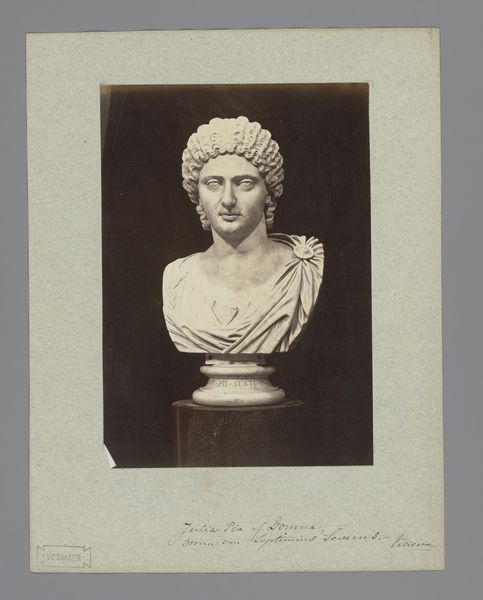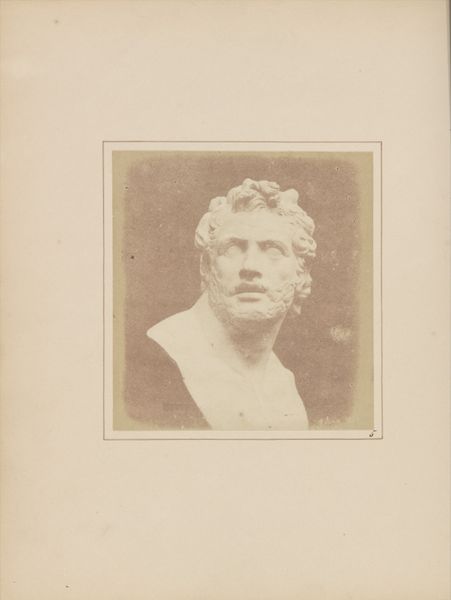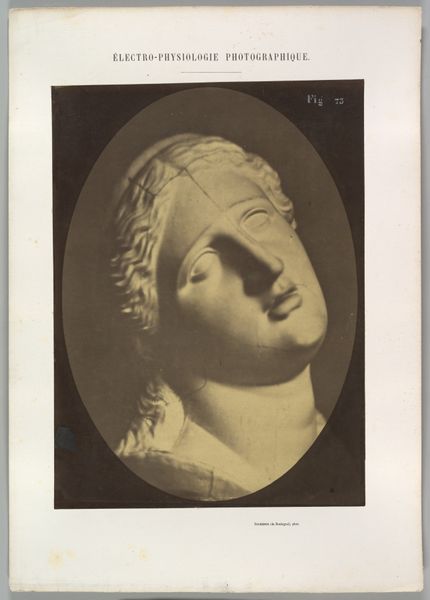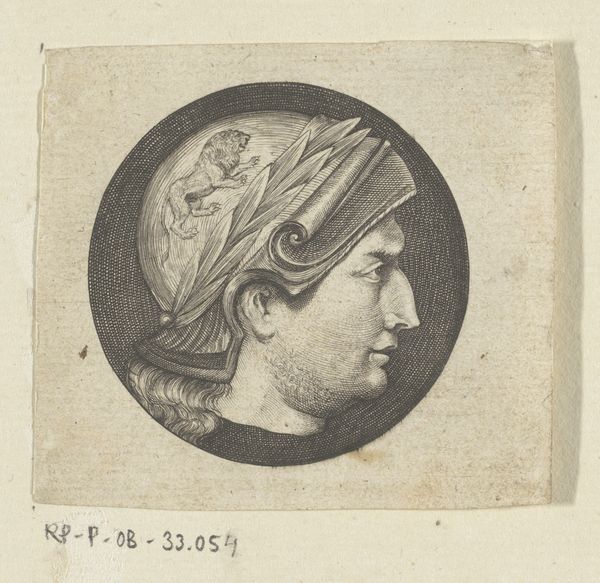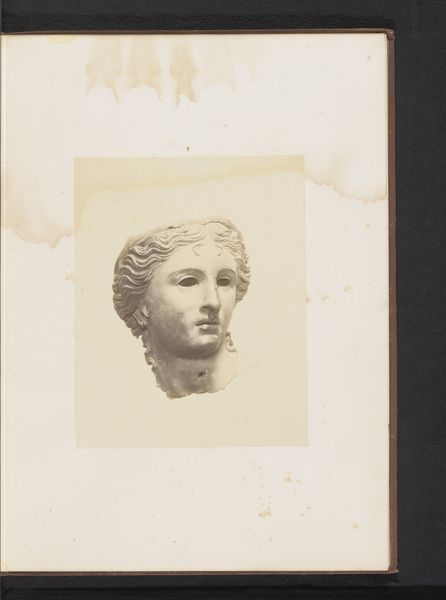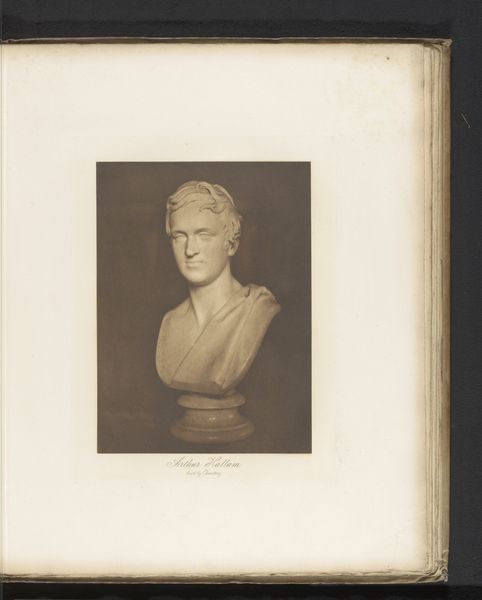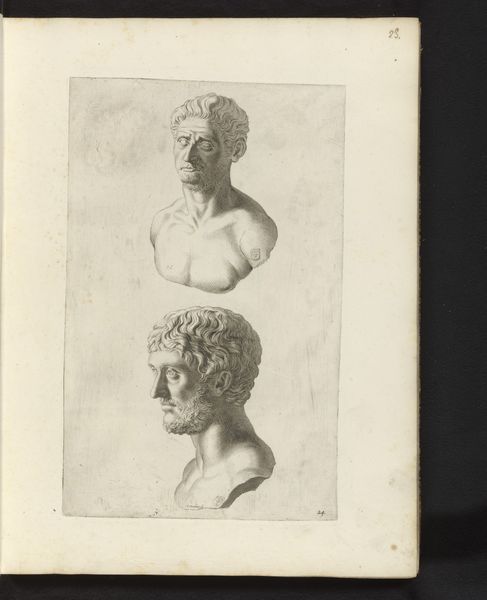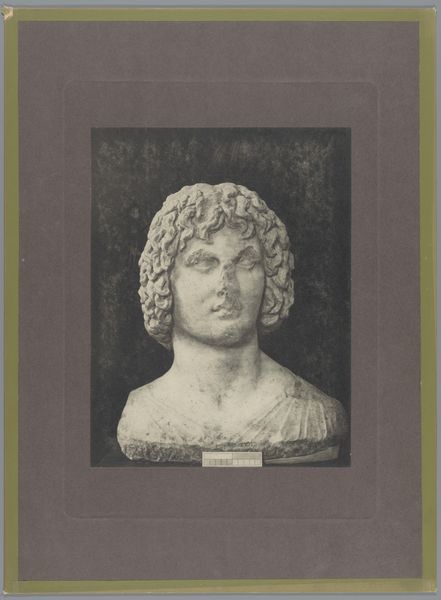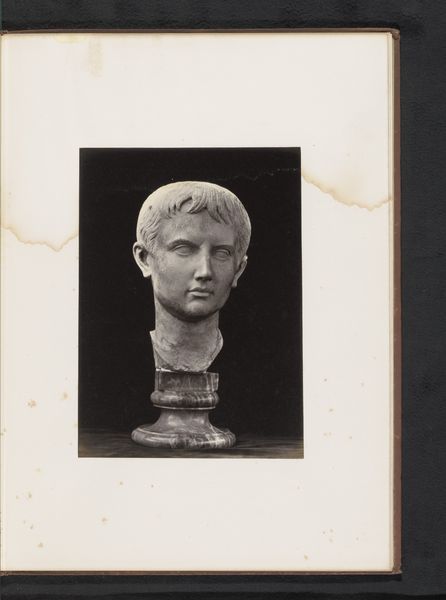
metal, photography, sculpture
#
portrait
#
metal
#
sculpture
#
greek-and-roman-art
#
photography
#
sculpture
Dimensions: height 455 mm, width 615 mm
Copyright: Rijks Museum: Open Domain
Curator: It strikes me immediately; this has a wonderful sense of duplication and display. Editor: Indeed. This photograph from 1898 presents front and side views of a sculpture, titled "Voor- en zijaanzicht van een sculptuur van het hoofd van Aphrodite," which translates to "Front and side view of a sculpture of the head of Aphrodite." Curator: It’s presented so plainly. The matte texture of the photograph and the grey card frame feel deliberate, not decorative. What were photographs like this meant for? Editor: Well, consider that it predates widespread image reproduction in publications. Photos like this were often created as study aids—ways for students or art enthusiasts to have visual access to classical sculptures without travel. It’s a reproductive technology mediating access to art, transforming three-dimensional objects into flat images for broader consumption. Curator: Interesting. Look closely at the way the sculptor has rendered her hair—those soft waves and how they catch light— and the marble, its veins suggesting inherent characteristics like impurities, strength, the way it behaves under the chisel. But here we see the work translated again, through chemical processes and light and shadows, onto paper. Editor: And consider, too, the role of museums and educational institutions in circulating such imagery. Who had access to this object? Was it part of a teaching collection? Was this image meant for private or public distribution? The presentation of Aphrodite—the goddess of love and beauty—as an object of study reinforces certain power dynamics and modes of viewing. Curator: Definitely, the labor and class divisions implicit in access and viewership are worth noting. Looking closely, it seems this specific sculpture wasn't celebrated for high artistic ambition or beauty, it has a somewhat anonymous history—likely functioning to produce a more standardized, classical model for teaching and learning within a specific social context. Editor: Yes, it becomes a node within a much larger system of knowledge production and cultural capital. Seeing how even an anonymous artwork serves a specific social function grants us critical perspective on the politics of visual culture then, and now. Curator: I’ll remember this the next time I pick up my phone and see the endless reproduction of artworks flooding my feed. It provides such historical context to modern habits.
Comments
No comments
Be the first to comment and join the conversation on the ultimate creative platform.
